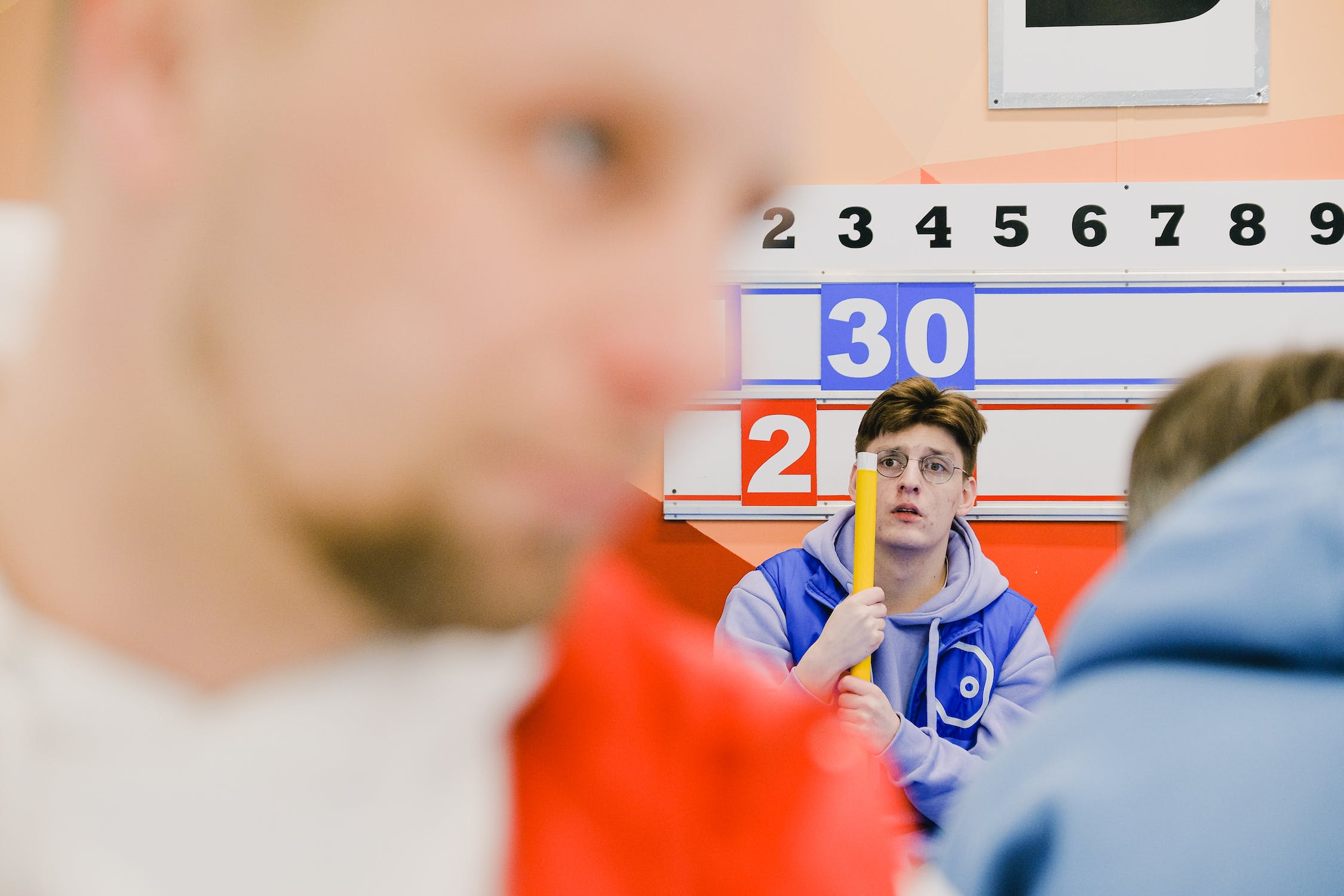Introduction
Swimming is a popular sport enjoyed by many, whether for recreation or competition. One of the essential skills in swimming is measuring distances accurately, especially when it comes to races.
The standard unit of distance measurement for swimming competitions is meters, but some pools use yards as their primary measurement system.
This can be confusing for swimmers who need to convert distances from meters to yards or vice versa. An example is converting 50 meters to yards.

In this blog post, we will focus on converting a distance of 50 meters to yards, which is a common distance for swimming competitions.
We will explore the simple steps you can take to make this conversion with ease and provide tips to help you avoid common mistakes.
Whether you are a seasoned swimmer or just starting, this guide will be a helpful resource to have on hand.
So, let’s dive in and learn how to convert 50 meters to yards in the swimming pool!
Importance of converting distances in swimming
Converting distances in swimming is important for several reasons:
-
Competition: In competitive swimming, races are held at standardized distances.
For example, the Olympic Games feature races at distances of 50 meters, 100 meters, 200 meters, 400 meters, 800 meters, and 1500 meters.
If a swimmer is competing in a race in a non-standard pool, it is essential to convert the distance to the standard length to ensure fair competition. -
Training: Swimmers train for different distances and need to know how far they are swimming to monitor their progress and adjust their training accordingly.
Converting distances allows swimmers to compare their times and distances accurately, regardless of the pool they are training in.
- Safety: Swimmers who train in open water need to be aware of the distances they are swimming to avoid exhaustion, dehydration, and other risks associated with prolonged physical activity in water.
- Planning: When planning a swim, such as a swim across a lake or a channel, it is important to know the distance accurately to prepare adequately and estimate the time required to complete the swim.
-
Record keeping: Accurate record-keeping of distances swum is essential for swimmers and coaches to monitor progress and track achievements.
Difference between Meters and Yards
Meters and yards are two different units of measurement commonly used in various fields, including swimming (swimming pool).
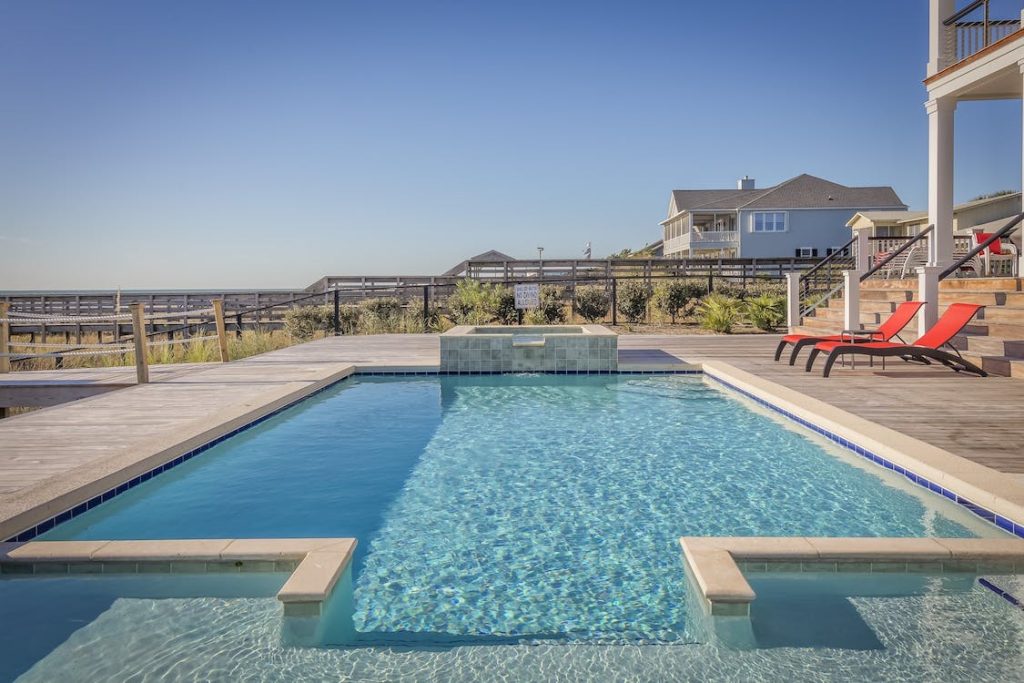
Understanding the difference between these two units is crucial for swimmers, coaches, and officials.
In swimming competitions, different pools may be measured in meters or yards, and not understanding the difference could affect performance and measurement accuracy.
Meters and yards are both units of length, but they differ in their size. One meter is equivalent to 1.0936 yards, or approximately 3.28 feet.
Yards, on the other hand, are a standard unit of measurement in the United States and are equal to 0.9144 meters.
In swimming, the length of a pool is measured from one end to the other, and the number of laps completed determines the distance swum.
For example, a 50-meter pool would require two laps to complete a 100-meter race, while a 50-yard pool would require four laps to complete the same distance.
The difference in the length of the pool can affect a swimmer’s performance, as it can alter the number of turns required, the distance between the turns, and the overall pace of the swim.
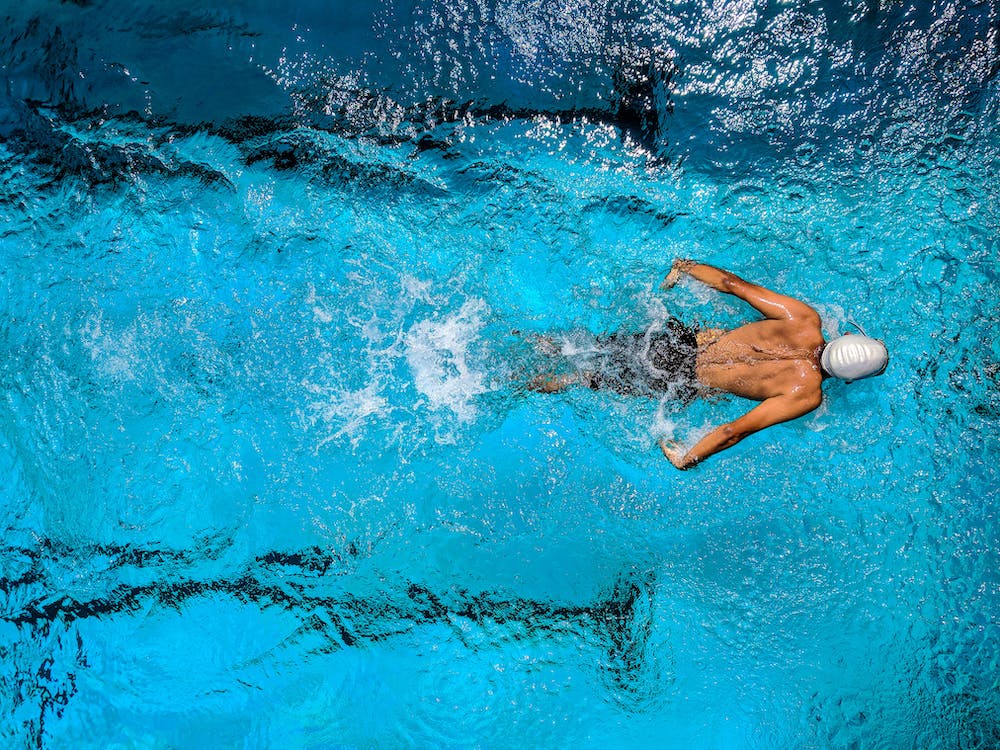
It’s important to note that pools can be either short courses or long courses. A short course pool is typically 25 yards or 25 meters in length, while a long course pool is typically 50 yards or 50 meters in length.
When training or competing in a pool of different measurements, swimmers should adjust their strategies accordingly.
READ ALSO: 14 Important Swim Meet Survival Kit
Factors to consider when converting distances in a swimming pool
When converting distances in a swimming pool, there are several factors to consider:
-
Length of the pool: The length of the pool is the most important factor when converting distances.
The standard length for most competitive swimming pools is 25 yards (or meters) or 50 yards (or meters), but there are also other lengths used for different purposes. -
Unit of measurement: You need to consider the unit of measurement being used for the distance.
Swimming pools are typically measured in yards or meters, but some pools may use feet or other units. -
Direction of swim: You also need to consider the direction of the swim when converting distances.
If the swimmer is swimming in a straight line, the distance will be the same regardless of the direction.
However, if the swimmer is swimming in a circular pattern, the distance will be different depending on the direction of the swim. -
Starting and Finishing points: The starting and finishing points of the swim can affect the distance.
For example, if the swimmer starts and finishes at the same point in a circular pool, the distance will be the circumference of the circle.
If the swimmer starts and finishes at opposite ends of a rectangular pool, the distance will be the length of the pool. -
Turns: The turns performed by the swimmer can also affect the distance.
In competitive swimming, turns are typically performed at each end of the pool, and these turns can add or subtract from the distance swum.
-
Stroke length: The length of the swimmer’s stroke can also affect the distance swum. Longer strokes will cover more distance than shorter strokes.
By taking these factors into account, you can accurately convert distances in a swimming pool.
Step-by-step guide on how to convert 50 meters to yards in the swimming pool
Converting 50 meters to yards in the swimming pool involves a simple mathematical calculation.
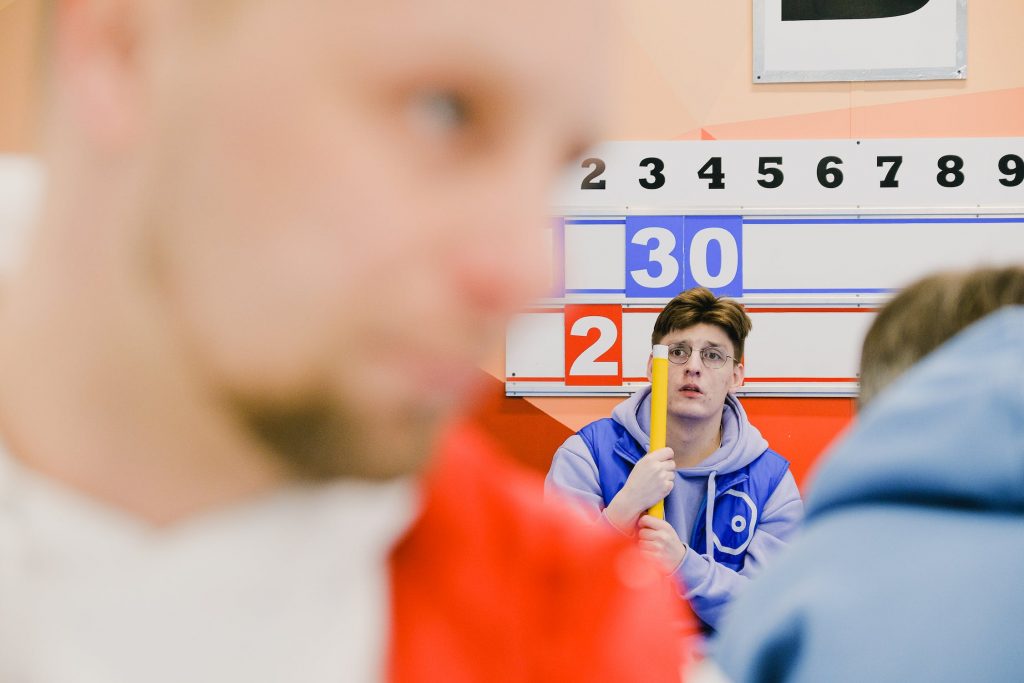
Here’s a step-by-step guide to do it:
-
Step 1: First, note that meters and yards are both units of measurement for length or distance.
Meter is the standard unit of measurement in the International System of Units (SI), while yards are commonly used in the United States and some other countries. -
Step 2: To convert 50 meters to yards, you need to know the conversion factor between these two units.
The conversion factor is 1 meter = 1.09361 yards. This means that 1 meter is equivalent to 1.09361 yards.
-
Step 3: Now, multiply the length in meters by the conversion factor to convert it to yards. In this case, 50 meters x 1.09361 yards = 54.6805 yards.
-
Step 4: Round off the answer to the appropriate number of significant figures.
Since the original length, 50 meters, has two significant figures, the converted length should also have two significant figures. Therefore, the final answer is 55 yards. -
Step 5: Verify the answer. Check your answer to ensure that it is reasonable and makes sense. For example, a swimming pool that is 50 meters long would be around 55 yards long.
That’s it! You have now successfully converted 50 meters to yards in the swimming pool.
READ ALSO: 7 Swimming Techniques That Will Save Your Life
READ ALSO: Pros and Cons of Swim Spas
Common mistakes to avoid when converting distances in a swimming pool
When converting distances in a swimming pool, there are a few common mistakes that you should avoid to ensure accuracy:
-
Failing to account for the pool length: Different swimming pools can have different lengths. Therefore, you must make sure to verify the pool length before making any calculations.
-
Forgetting to account for turns: When swimming laps, you need to account for the turns you make at the end of each lap.
This means that the distance swum in a single lap will be greater than half the length of the pool. -
Incorrectly measuring distances: It is important to measure the distance accurately, either using a tape measure or counting the number of strokes you take to complete the distance.
-
Confusing meters and yards: In some countries, swimming pools are measured in meters, while in others, they are measured in yards.
Be careful not to confuse the two, as this can lead to significant errors in your calculations.
-
Failing to account for the start and finish: When timing your swims, you need to make sure that you start and finish at the same point in the pool.
If you start or finish at a different point, this can affect the accuracy of your calculations. -
Assuming that every lap is the same distance: Some swimmers tend to swim faster or slower as they progress through their workout.
Therefore, it is important to account for any variations in speed or distance when calculating the total distance swum. -
Relying solely on technology: While technology can help measure distances, it is not always reliable.
Make sure you are familiar with the pool you are swimming in and can estimate distances on your own if needed.
Importance of Accuracy in distance measurement in swimming
Accuracy in distance measurement is critical in swimming because it ensures that swimmers can complete their races in the shortest possible time.
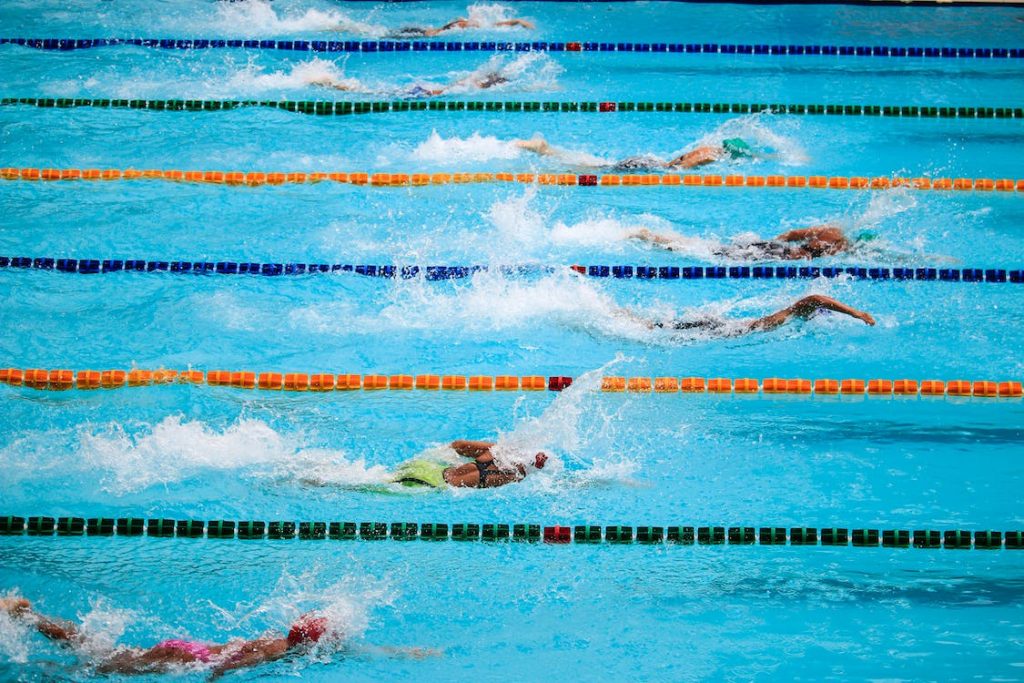
In a swimming race, every second counts, and even small measurement errors can lead to significant differences in race times.
In competitive swimming, races are measured in meters, and the swimmer who completes the designated distance in the shortest possible time is declared the winner.
For example, a 100-meter race is completed in four laps of a 25-meter pool. If the distance is measured inaccurately, the race might end up being shorter or longer than the designated distance, leading to incorrect results and unfair competition.
Furthermore, distance measurement accuracy is also essential for swimmers to track their progress and improve their performance.
Swimmers often rely on accurate distance measurements during training to monitor their progress and make necessary adjustments to their technique or training regimen.
Without accurate distance measurement, swimmers may not be able to accurately assess their strengths and weaknesses, leading to a slower rate of improvement.
Accurate distance measurement is also essential for safety reasons. In open water swimming, swimmers need to navigate through natural obstacles and challenging conditions, such as currents and waves.
Accurate distance measurement can help swimmers to maintain their direction and avoid getting lost or disoriented in the water.
READ ALSO: 10 Important Aquatic Skills You Need to Know
READ ALSO: History of open water swimming in Australia
Conclusion
In conclusion, converting distance measurements is a useful skill to have when it comes to swimming, especially when it comes to competitive swimming.
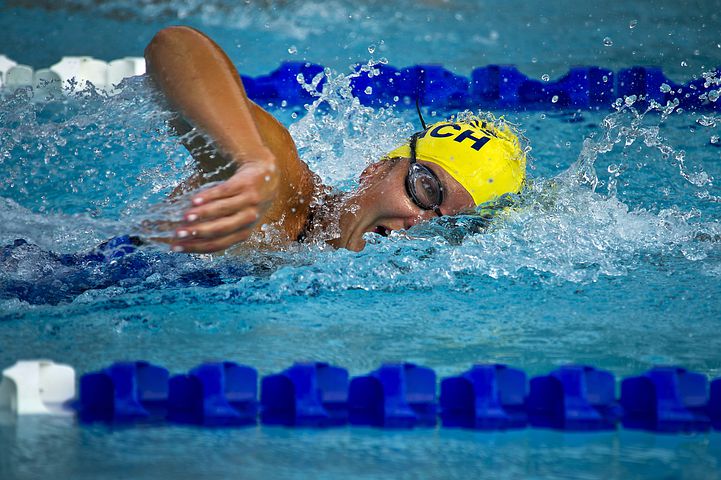
In this article, we have discussed how to easily convert a distance of 50 meters to yards in the swimming pool.
By following the simple formula of multiplying the distance in meters by 1.09361, we can quickly obtain the equivalent distance in yards.
This conversion can be used to determine the equivalent yardage for a 50-meter pool or to compare times between a pool measured in meters versus one measured in yards.
With this knowledge, swimmers can better prepare for their competitions and have a better understanding of their performance.
